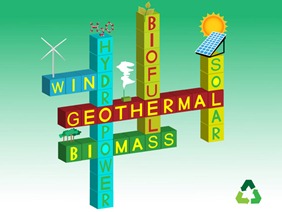"The Third Industrial Revolution," by Jeremy Rivkin
 For all of us despairing of the future of green technology and an abatement of carbon emissions, there is good news in the form of Jeremy Rivkin’s current book, The Third Industrial Revolution, (Palgrave-MacMillan, 2011). According to Rivkin, a new energy-information paradigm is emerging, and the sooner we adopt I, the sooner we will be out of the ecological and economic fix we are in.
For all of us despairing of the future of green technology and an abatement of carbon emissions, there is good news in the form of Jeremy Rivkin’s current book, The Third Industrial Revolution, (Palgrave-MacMillan, 2011). According to Rivkin, a new energy-information paradigm is emerging, and the sooner we adopt I, the sooner we will be out of the ecological and economic fix we are in.
Rivkin sets the paradigm on five ‘pillars,’ although viewing them as five nexis in a web would be more accurate. The first pillar is renewable energy resources; the second, the transformation of buildings into mini-power plants; the third, new energy storage technologies, especially hydrogen; the fourth, using the internet to transform the power grid into an “intergrid;" and the fifth, changing the modes of transportation into electric powered vehicles that can power and be powered by the intergrid.
The renewables are of course solar, wind and hydro, with a big emphasis on geothermal energy. Enough solar power reaches the earth every eight minutes to power the world. Twenty per cent of the winds blowing around the earth would do the same. Two miles under the earth is enough thermal energy to power us pretty much forever. Of course, harnessing those energies and converting them to affordable electricity is what is holding us up.
The good news is that there are a fair number of cities moving to make the transition from the Second to the Third Industrial Revolution, and it looks like Germany is ahead of schedule. Germany will soon be getting some 20 per cent of its energy from such renewable sources as solar by 2013, wind and hydro power, with seven per cent already coming from solar.
The bad news is that it is going to take a lot more climate change time than we have, because the fossil fuel powers that be have us by the pump. It took from the early 1900’s until the middle of the century for oil and coal to complete its grip on the way we live. It is the fossil fuel and related industries like automobiles who have our legislators’ ears, and they are not going to yield power gracefully, Rivkin points out.
 Nevertheless, Rivkin says, time is running out for the fossil fuel powers, as are the sources of their power. Oil, coal and gas are not renewable. Production of oil peaked in the 1980’s. We are running out of non-renewable materials because, unlike the renewables, they are limited in nature. As they run out, they become more expensive and their cost motivates us to find alternative sources.
Nevertheless, Rivkin says, time is running out for the fossil fuel powers, as are the sources of their power. Oil, coal and gas are not renewable. Production of oil peaked in the 1980’s. We are running out of non-renewable materials because, unlike the renewables, they are limited in nature. As they run out, they become more expensive and their cost motivates us to find alternative sources.
But more important than the mere exhaustion of fossil fuels is the fact that the way they are used is becoming passe. Because fossil fuels are scarce, relatively speaking, it is possible to control their ownership and distribution, which has created the hierarchical systems of production and distribution under which mankind has lived. Information has been similarly structured, with media moguls owning the sources of information.
While the powers that be were not looking, the information revolution came, and it is here to stay. Already the top-down power structure has been shaken by the way information flows through social networks, and has changed the way the entertainment industry operates. The internet, Rivkin says, is reflective of the distributed ownership and distribution that alternative power systems inherently provide. If every building and vehicle can both provide its own energy and distribute its surplus, participation will no longer be dependent on power centers, but on flow — the flow of energy throughout the vast network of humanity, connected, at last.


